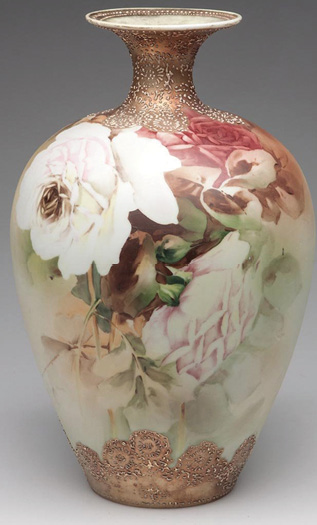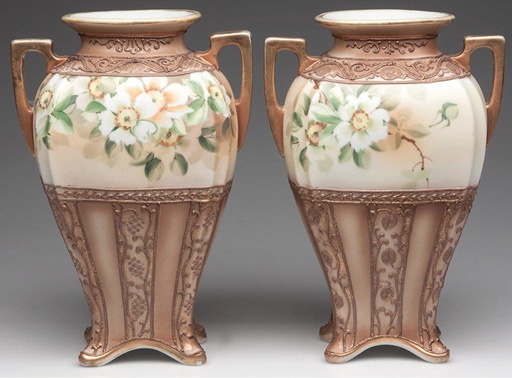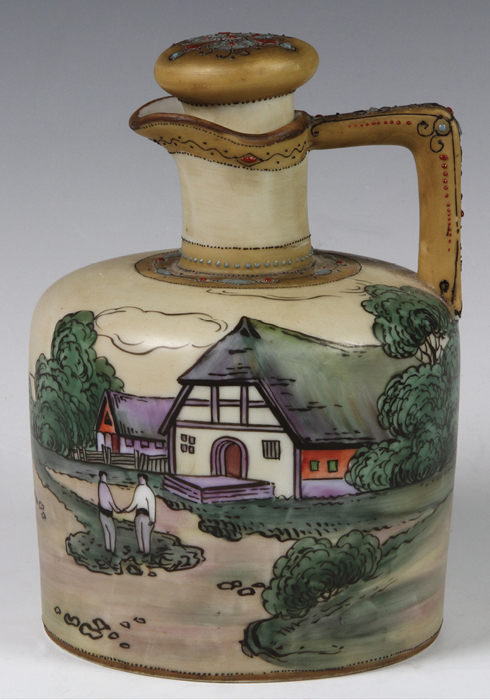
Floral vase, baluster form with two open handles at shoulder, hand painted with roses, blue maple leaf mark, first quarter 20th century, 13" h. $431
“NIPPON” IS A term used to describe a wide range of porcelain wares produced in Japan from the late 19th century until about 1921. It was in 1891 that the United States implemented the McKinley Tariff Act, which required that all wares exported to the United States carry a marking indicating their country of origin. The Japanese chose to use “Nippon,” their name for Japan. In 1921 the import laws were revised and the words “Made in” had to be added to the markings. Japan was also required to replace the “Nippon” with the English name “Japan” on all wares sent to the United States.
Many Japanese factories produced Nippon porcelain, much of it hand-painted with ornate floral or landscape decoration and heavy gold decoration, applied beading and slip-trailed designs referred to as “moriage.” Be aware that a number of Nippon markings have been reproduced and used on new porcelain wares.

Floral vase, baluster form with two open handles at shoulder, hand painted with roses, blue maple leaf mark, first quarter 20th century, 13" h. $431

Floral vase, baluster form with everted lip, hand painted with roses, blue maple leaf mark, first quarter 20th century, 11" h. $316

Pair of floral vases, two-handle square baluster form with two open handles at shoulder and flared feet, raised moriage centering band of painted white dogwood flowers, green M-in-wreath marks, first quarter 20th century, 9-1⁄2" h. $316

Plate with roses, 11" dia. $236

Painted urn decorated with Arabic scene, quarter-inch chip to one foot, wear to gold gilt, 17-3⁄4" h. $830

Scenic cobalt vase, square baluster form with two open handles at shoulder and flared feet, hand-painted scenic reserves on all four sides, applied red beaded grapes, green M-in-wreath mark, first quarter 20th century, 9-1⁄2" h. $288

Two decorated vases, each of flattened pillow form with two handles, smaller vase painted with irises, larger vase painted with Art Nouveau poppies and water lilies surrounding a reserve featuring swans on a lake, M-in-wreath marks, one blue and one green, first quarter 20th century, 8" and 10" h. $374


Scenic vase, large two-handle tapering form hand painted with scenic reserve on both sides, extensive gilding, blue maple leaf mark, first quarter 20th century, 13" h. $161

Whiskey jug with hand-painted European cottage scene, stopper needs new cork, 6" h. $100